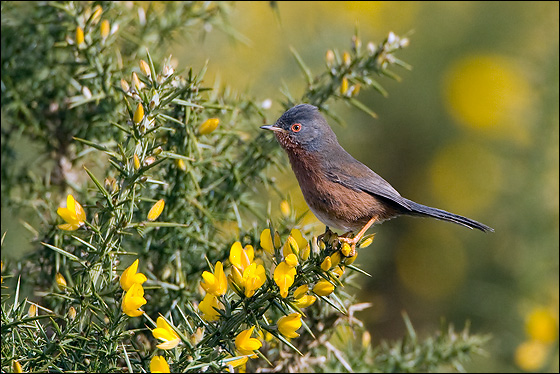Dartford Warbler (Sylvia undata)
One of the Dartford Warbler’s strategies to survive poor weather would appear to be communal roosting, a habit not seen among any other Sylvia warblers. There are several records of 6-8 birds sleeping in the same bush at night, and even sharing their site with two other small-bodied birds, Wrens and Goldcrests.
The Dartford Warbler’s case is also no doubt helped by the fact that not many other species of birds choose to skulk in uniform low, thick heathy vegetation in winter, so it has rather little competition. In these well sheltered thickets it feeds almost exclusively on arthropods, including insects and spiders, picking them off vegetation at a height between 0.5 m and 2.0 m above the ground. It rarely ventures on to the ground itself, in contrast to, for example, the Marmora’s Warbler, and it rarely feeds in trees, although it will readily accept small trees in its territory, as singing perches, for example.
Stability seems to be a feature for this species. As well as living in the same territory all year round, birds also, where possible, remain with their mates from year to year and throughout the year (in France, about 16% were able to do this, a high figure given the inevitable raised mortality for such a small bird). The only time they have to move is when they, as youngsters, disperse from their natal areas; some individuals undoubtedly migrate considerable distances, but in the main they tend to settle only a few kilometres from where they were born.
The Dartford Warbler is a productive species. Even on the northern fringes of its range it can fit in three broods a year, with the first clutch in April or May averaging four eggs and later clutches five. Both birds feed the young but, because the male does not have a brood patch, the female performs the lion’s share (75%) of incubation duties. Nest building is shared, but the male may build several incomplete structures as part of his mate attraction routine.

